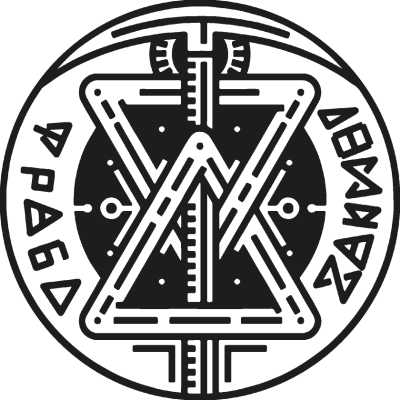TROUBLEHACKING
Scientific algorithms that help in solving
business and personal problems
business and personal problems
I GENERAL INFORMATION
Troublehacking is a methodology for system improvement, a set of methods and tools aimed at invention of nonstandard problem-solving solutions and their practical application; in a broader sense it's a scientific and research programs for social processes.
Troublehacker is a systems' developer; an inventor of nonstandard solutions that puts them into practice; a man of the future that is undoubtedly superior to artificial intelligent.
Troublehacker is a systems' developer; an inventor of nonstandard solutions that puts them into practice; a man of the future that is undoubtedly superior to artificial intelligent.
II EXTERNAL SYSTEMS IMPROVEMENT
Effective problem-solving algorithm (EPSA) is a basic method of Troublehacking that allows Troublehackers to invent nonstandard solutions and put them into practice through deep analysis of non-technical systems. It is based on system analysis, risks theory and tools of the Theory of Inventive Problem Solving (TRIZ).
-> Learn more
Vector Algorithm is a simplified Troublehacking method designed for invention of effective problem-solving solutions. It is based on associative thinking through the analysis of the Catalogue of Inventive Ideas.
-> Learn more
-> Learn more
Vector Algorithm is a simplified Troublehacking method designed for invention of effective problem-solving solutions. It is based on associative thinking through the analysis of the Catalogue of Inventive Ideas.
-> Learn more
III INTERNAL SYSTEMS IMPROVEMENT
Systematic hedonism (joy management) - is a philosophical doctrine designed to increase the productivity of life through pleasures systematization.
-> Learn more
Cognitive body psychotherapy (CBP) is a system for complex adjustment of the psyche through the influence of the short-term memory, internal monologue and muscles spasms.
-> Learn more
-> Learn more
Cognitive body psychotherapy (CBP) is a system for complex adjustment of the psyche through the influence of the short-term memory, internal monologue and muscles spasms.
-> Learn more
IV INSTRUMENTS
Troublehacking Inventive Ideas Register is a method of Troublehacking that contains a structured set of ideas that direct the "vector" of troublehacker's search for system improvement, i.e. maximum goal's cores implementation with minimum expense.
-> Learn more
Root cause analysis is a tool for process analysis aimed at detection of root causes between conditions and events.
Perfect end result (PER) is one of the basic terms of TRIZ. Problem solving with minimum (or ideally none) resources (time, money, skills, energy, connections, etc.)
Goal's core ― a method for the detailing of the end result. It answers the question what should be being done by the systems at the moment of objective fulfillment.
Core's obstacles – a fully elaborated property of the system that should be eliminated or modified for the implementation of the goals' cores.
-> Learn more
Root cause analysis is a tool for process analysis aimed at detection of root causes between conditions and events.
Perfect end result (PER) is one of the basic terms of TRIZ. Problem solving with minimum (or ideally none) resources (time, money, skills, energy, connections, etc.)
Goal's core ― a method for the detailing of the end result. It answers the question what should be being done by the systems at the moment of objective fulfillment.
Core's obstacles – a fully elaborated property of the system that should be eliminated or modified for the implementation of the goals' cores.
TROUBLEHACKING SYMBOLS
Symbols of Troublehacking are two pyramids and a tool. The lower pyramid symbolizes ascent (development). If you look closer you can see a little sun that symbolizes looking below the surface (to improve systems you have to get to the root of your goal). Both pyramids are connected with a tool. In short Troublehacking symbolism can be described as ascending, looking below the surface and using tools. The symbols contain a secret meaning.

TROUBLEHACKER'S MISSION
Troublehacker's mission is in developing systems. Developing yourself, spheres of life, society and the world. Troublehacker is a creator that uses instruments of Troublehacking and improves himself and the world around him.
HISTORY OF TROUBLEHACKING
The author of Troublehacking is Ilya Vladimirovich Volochkov.
First ideas for methodology were invented in 2012. The theory of Troublehacking was published for the first time in 2018 [A Realist's Diary: the book about money, relationships and the meaning of life].
First ideas for methodology were invented in 2012. The theory of Troublehacking was published for the first time in 2018 [A Realist's Diary: the book about money, relationships and the meaning of life].
